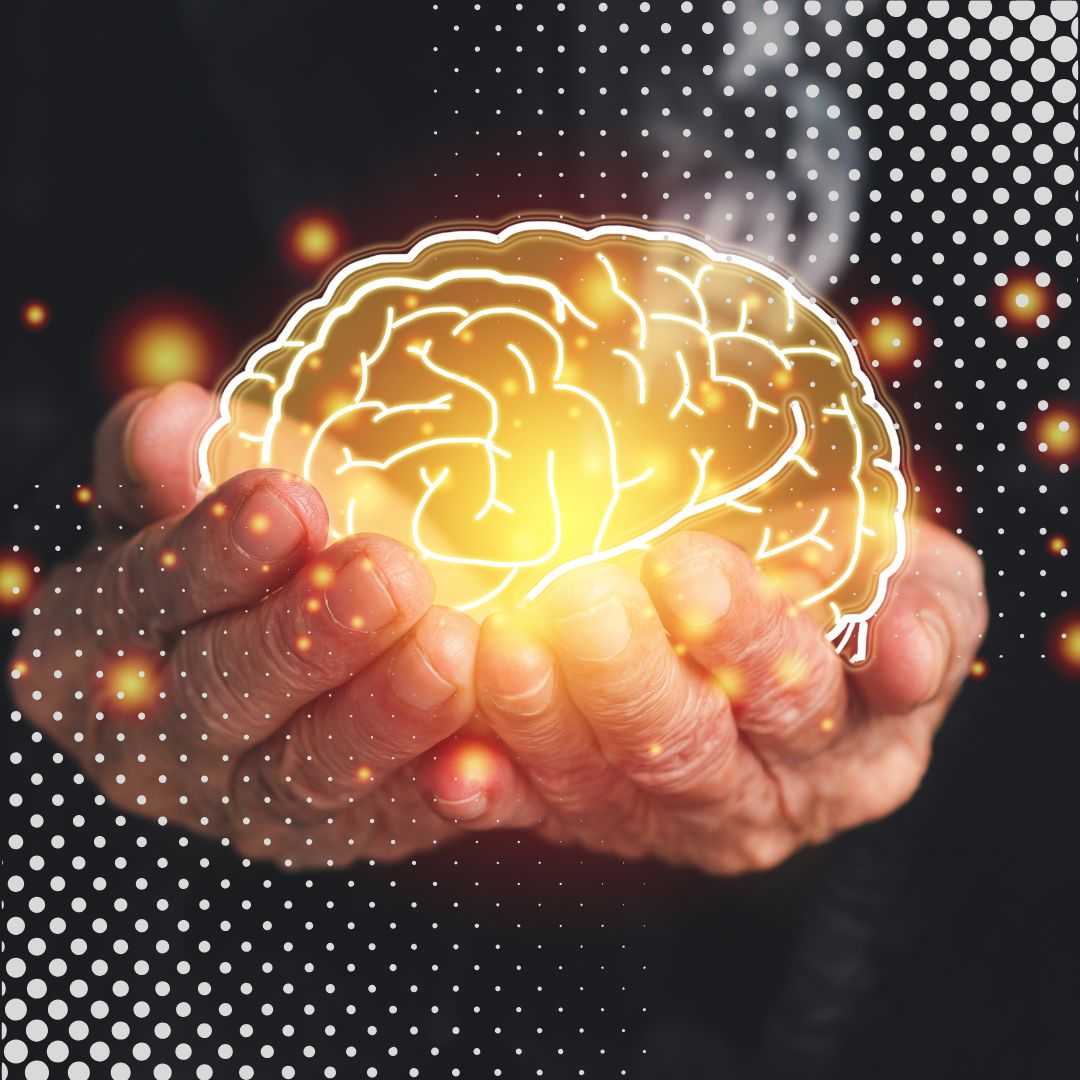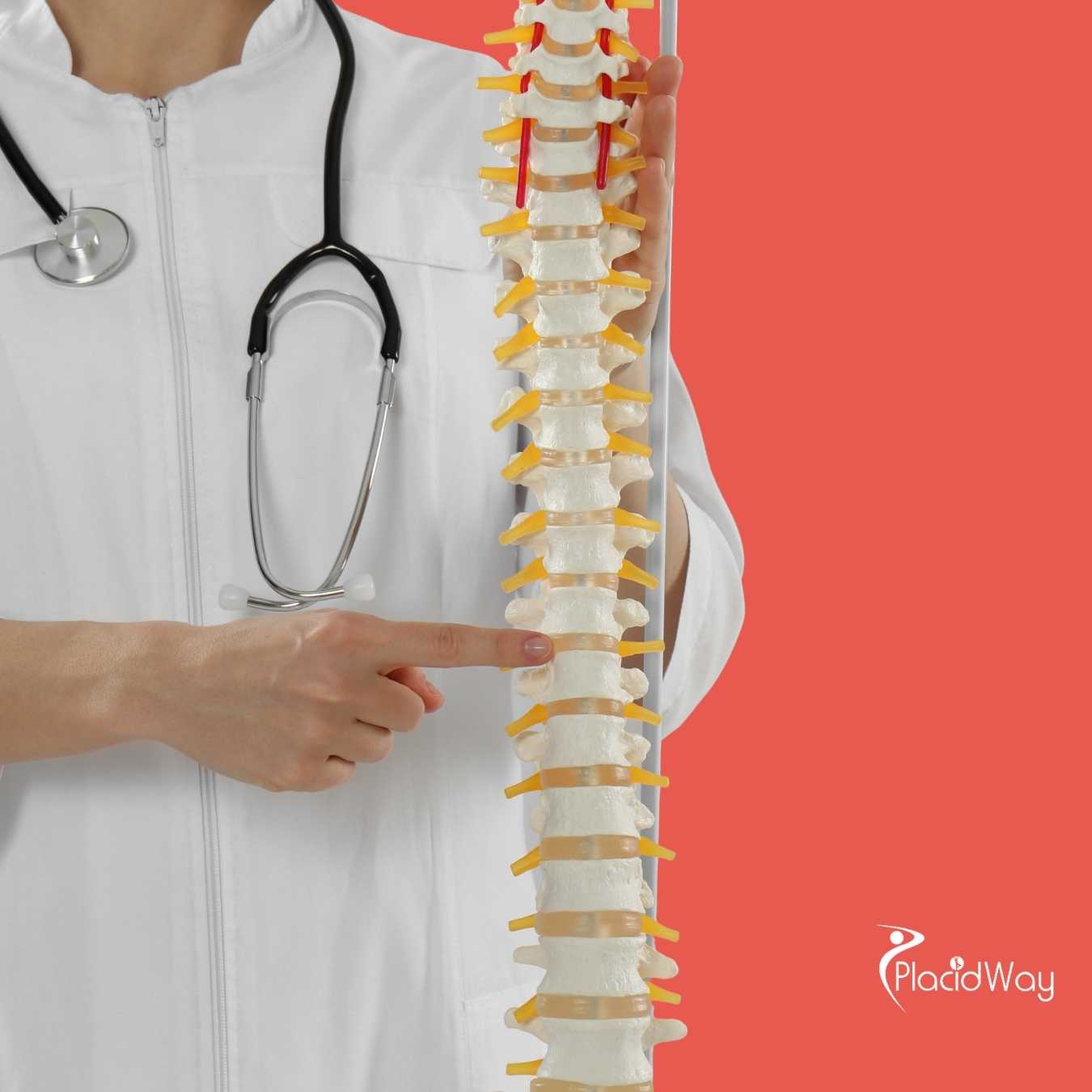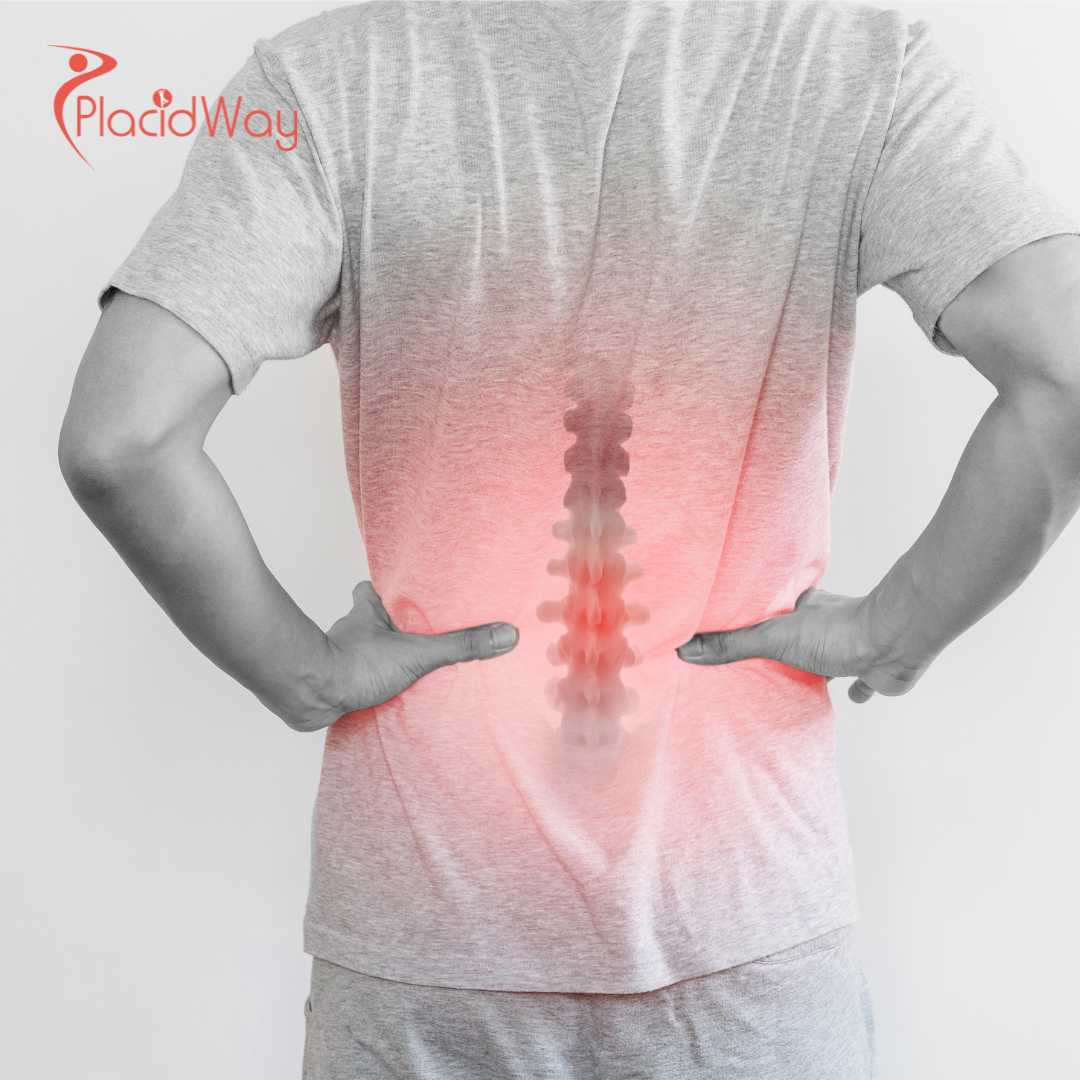.png)
Regaining Control: Exploring Stem Cell Therapy for Ataxia
Living with ataxia can be a profound challenge, characterized by a loss of muscle control, impacting everything from walking and speech to swallowing and eye movements. For many, the progressive nature of this neurological condition leaves them searching for advanced, effective treatments beyond conventional therapies. If you're exploring options to slow its progression and improve your quality of life, you've likely come across discussions about Stem Cell Therapy for Ataxia. This innovative approach is generating significant interest globally, offering a beacon of hope for individuals seeking to regain control and enhance their daily functioning.
Ataxia, whether inherited or acquired, disrupts the brain's ability to coordinate voluntary movements. Patients often experience difficulties with balance, coordination, fine motor skills, and sometimes even cognitive functions. Conventional treatments typically focus on managing symptoms and improving functionality through physical therapy, occupational therapy, and assistive devices. However, these methods don't address the underlying cellular damage or neurodegeneration that causes ataxia. This is where stem cell therapy steps in, aiming to target the root causes by promoting cellular repair, regeneration, and reducing inflammation in the affected areas of the brain and spinal cord.
For those searching for "ataxia treatment options," "new ataxia treatments," or "does stem cell therapy help ataxia," understanding this advanced procedure is crucial. Stem cell therapy harnesses the unique properties of stem cells – their ability to differentiate into various cell types and their regenerative capabilities – to potentially repair damaged neural pathways, protect existing neurons, and modulate immune responses. While it's not a definitive cure, many patients report improvements in balance, coordination, speech, and overall neurological function, making it a compelling consideration, particularly for those looking at international medical tourism for cutting-edge treatments.
What are the common symptoms of Ataxia?
Ataxia symptoms can vary widely depending on the specific type and severity of the condition, but they generally revolve around a lack of muscle control and coordination. Patients often describe it as feeling perpetually off-balance, similar to being intoxicated, even when completely sober. Some of the most frequently observed symptoms include:
- Poor Coordination (Incoordination): This is the hallmark symptom, affecting fine motor skills like writing, buttoning clothes, or picking up small objects.
- Unsteady Gait and Balance Issues: Walking becomes difficult, often wide-based, clumsy, and prone to stumbling or falling. Patients might describe searching for "ataxia gait problems solutions."
- Speech Difficulties (Dysarthria): Speech can become slurred, slow, or irregular, making it hard to understand.
- Swallowing Problems (Dysphagia): Difficulty with swallowing can lead to choking or aspiration, affecting nutrition and overall health.
- Involuntary Eye Movements (Nystagmus): Rapid, uncontrolled movements of the eyes can impair vision and cause dizziness.
- Tremors: Involuntary shaking of the limbs or trunk.
- Fatigue: Chronic tiredness is a common complaint, often due to the effort required for basic movements.
- Cognitive Impairment: Some forms of ataxia can also affect memory, concentration, and executive functions.
- Sensory Loss: Numbness, tingling, or reduced sensation in the extremities in certain types of ataxia.
These symptoms can profoundly impact a patient's independence and quality of life, prompting many to actively search for "effective treatments for ataxia symptoms" or "how to improve ataxia balance."
What causes Ataxia and what are its risk factors?
Ataxia is fundamentally a neurological disorder caused by damage or degeneration in the cerebellum, the part of the brain responsible for coordinating voluntary movements, or the nerve pathways that connect to it. Understanding the cause is vital for diagnosing and sometimes treating the condition.
Common causes and risk factors include:
- Genetic Mutations (Hereditary Ataxias): These are inherited conditions where faulty genes lead to the production of abnormal proteins or insufficient proteins, causing nerve cell damage over time. Examples include Friedreich's ataxia (most common hereditary form), Spinocerebellar Ataxias (SCAs), and Ataxia-Telangiectasia. Patients often ask, "is ataxia genetic?"
- Stroke: A lack of blood supply to the cerebellum can cause sudden onset ataxia.
- Head Trauma: Severe head injuries can damage the cerebellum.
- Tumors: A growth in or near the cerebellum can disrupt its function.
- Multiple Sclerosis (MS): This chronic disease can damage the myelin sheath of nerve cells, including those in the cerebellum.
- Cerebral Palsy: Ataxia can be a symptom of this condition, which affects muscle control due to brain damage before or during birth.
- Alcohol Abuse: Chronic heavy alcohol consumption can lead to cerebellar degeneration.
- Vitamin Deficiencies: Severe deficiencies in Vitamin E, B-12, or thiamine can cause ataxia.
- Toxic Reactions: Exposure to certain drugs (e.g., sedatives, anti-seizure medications) or heavy metals (e.g., mercury, lead) can induce ataxia.
- Infections: Some viral infections (e.g., chickenpox) can cause acute cerebellar ataxia, particularly in children.
- Paraneoplastic Syndromes: Rare immune system responses to cancer that cause damage to the nervous system.
While some causes are treatable, many forms of ataxia, particularly the hereditary ones, are progressive. This drives the search for advanced treatments like stem cell therapy, as patients look for "ataxia causes and treatments" or "new research on ataxia."
What types of stem cell therapies are used for Ataxia?
The field of stem cell therapy for ataxia is continually evolving, with researchers exploring different types of stem cells and administration methods. The primary goal is to leverage the cells' regenerative and immunomodulatory properties to improve neurological function. Patients often ask, "what kind of stem cells for ataxia?"
The most common types of stem cells used include:
- Mesenchymal Stem Cells (MSCs):
- Source: Often derived from a patient's own bone marrow (autologous) or adipose (fat) tissue, or sometimes from umbilical cord tissue (allogeneic).
- Mechanism: MSCs are known for their strong anti-inflammatory and immunomodulatory effects. They release growth factors and cytokines that help protect existing neurons, reduce oxidative stress, and create a more favorable environment for neural repair. They don't typically differentiate into neurons but support the existing nervous system.
- Administration: Commonly administered intravenously (IV) or intrathecally (into the spinal fluid).
- Neural Stem Cells (NSCs):
- Source: Can be derived from fetal tissue (ethically complex and less common clinically), induced pluripotent stem cells (iPSCs), or directly from certain adult brain regions.
- Mechanism: NSCs have the potential to differentiate into various neural cell types, including neurons, astrocytes, and oligodendrocytes. The hope is they could replace damaged neurons or support neural network function.
- Administration: Often requires direct injection into the brain (intracerebral) or spinal cord, which is more invasive.
- Hematopoietic Stem Cells (HSCs):
- Source: Found in bone marrow and umbilical cord blood.
- Mechanism: Primarily involved in blood cell formation, but they also have immunomodulatory properties and can release neurotrophic factors that support neural health. They are sometimes used in conjunction with other cell types.
The choice of stem cell type often depends on the specific type of ataxia, the clinic's expertise, and the patient's individual condition. Many clinics focus on MSCs due to their safety profile and ease of harvest. Patients looking for "stem cell treatment options for ataxia" should research clinics specializing in appropriate stem cell types and methods.
Who is a good candidate for Stem Cell Therapy for Ataxia, and what are the expected outcomes?
Determining eligibility for stem cell therapy for ataxia involves a comprehensive medical evaluation, as not everyone is an ideal candidate. Clinics assess various factors to ensure the patient can safely undergo the procedure and potentially benefit. Patients frequently inquire, "who is eligible for stem cell therapy for ataxia?"
General criteria often include:
- Confirmed Diagnosis: A definitive diagnosis of a specific type of ataxia (e.g., SCA, Friedreich's) and its stage.
- Stable Medical Condition: Patients should be in relatively good overall health, free from active infections, uncontrolled chronic diseases (like severe heart or kidney disease), or active cancer.
- Age and Disease Progression: While there isn't a strict age limit, patients who are not in the very advanced stages of the disease may see better outcomes, as there is more existing neural tissue to support and protect.
- Realistic Expectations: It's crucial for patients to understand that stem cell therapy is not a definitive cure, but rather a treatment aimed at managing symptoms, slowing progression, and improving functionality.
- Absence of Contraindications: Certain medical conditions or medications might preclude a patient from undergoing therapy.
Expected Outcomes:
While results vary, many patients report noticeable improvements in various aspects of their lives. These can include:
- Improved Balance and Gait: Patients often experience reduced falls and a more stable walking pattern.
- Enhanced Coordination: Better control over fine motor skills, making daily tasks like eating or dressing easier.
- Clearer Speech and Swallowing: Improvements in dysarthria and dysphagia, leading to better communication and nutrition.
- Reduced Tremors: A decrease in the severity or frequency of involuntary shaking.
- Increased Energy Levels: Less fatigue due to improved neural efficiency.
- Better Quality of Life: Overall enhancement in independence, self-confidence, and mental well-being.
It's important to remember that these improvements are often gradual and may require ongoing physical and occupational therapy to maximize the benefits. "Stem cell therapy for ataxia success stories" often highlight these functional gains, which, though not a cure, offer a significant improvement over the natural progression of the disease.
What are the potential risks, side effects, and recovery expectations of Stem Cell Therapy for Ataxia?
As with any medical procedure, stem cell therapy carries potential risks and side effects, though generally considered low, especially for autologous (patient's own cells) MSC treatments. Patients frequently ask, "is stem cell therapy for ataxia safe?" and "what is the recovery like after stem cell treatment?"
Potential Risks and Side Effects:
- Infection: A risk inherent in any invasive procedure, though minimized by sterile techniques.
- Allergic Reaction: More common with allogeneic (donor) cells, but still rare. Autologous treatments virtually eliminate this risk.
- Pain/Discomfort at Injection Site: Temporary soreness at the site of bone marrow or fat aspiration (if autologous) or at the IV/intrathecal injection site.
- Headache or Nausea: Especially after intrathecal injections, this can occur but is usually managed with medication and rest.
- Fever or Flu-like Symptoms: A temporary inflammatory response can occur.
- Tumor Formation (Teratomas): This is a theoretical risk, particularly with embryonic stem cells or certain iPSCs, but it is extremely rare with clinically used adult MSCs, which have a strong safety record.
- Immune Rejection: Primarily a concern with allogeneic cells, though MSCs have immune-privileged properties that reduce this risk.
Recovery Time and Expectations:
The recovery process largely depends on the method of stem cell administration and the patient's overall health.
- Immediate Post-Procedure: For IV or intrathecal injections, recovery is typically swift. Patients might experience mild fatigue, headache, or localized soreness for a day or two. Most can resume light activities within 24-48 hours.
- Longer-Term Recovery: The therapeutic effects of stem cells are not immediate. It takes time for the cells to exert their regenerative and immunomodulatory actions. Patients are usually advised to maintain a healthy lifestyle, continue with physical therapy, and follow up with their doctors.
- Expected Timeline: Noticeable improvements often begin weeks to a few months after treatment and can continue to evolve over several months. It's a gradual process, not an instant fix.
Clinics prioritizing patient safety will conduct thorough pre-screening and provide detailed post-procedure care instructions. Patients should always discuss specific risks with their treating physician.
How much does Stem Cell Therapy for Ataxia cost globally?
The cost of stem cell therapy for ataxia is a significant consideration for many patients, especially since it's often not covered by traditional insurance in many countries. The price can fluctuate wildly based on geographical location, the reputation of the clinic, the type and source of stem cells used, the number of infusions required, and the inclusion of ancillary treatments (e.g., hyperbaric oxygen therapy, physical therapy). Patients often search for "stem cell therapy for ataxia cost" or "affordable ataxia treatment abroad."
Here's a general cost comparison for a single course of treatment (which may include multiple infusions over several days/weeks):
| Country/Region | Estimated Cost Range (USD) | Typical Inclusions |
|---|---|---|
| USA / Western Europe | $25,000 - $50,000+ | Consultations, infusions, some post-care; often higher due to regulatory costs and overheads. |
| Mexico | $10,000 - $25,000 | Consultations, multiple infusions, some rehabilitation, accommodation packages often available. |
| India | $7,000 - $20,000 | Comprehensive packages including treatment, accommodation, airport transfers, often multiple sessions. |
| Turkey | $9,000 - $22,000 | Treatment, local transportation, potentially accommodation, often competitive due to high medical tourism volume. |
| Thailand | $10,000 - $25,000 | Similar to Mexico/Turkey, with a focus on holistic care and patient experience. |
These figures are estimates and can vary significantly. It's crucial to request detailed quotes from clinics that clearly outline all included services to avoid hidden costs. For those searching for "stem cell treatment for ataxia cost India" or "Mexico stem cell clinics," these price points illustrate why international options are appealing.
Why consider traveling abroad for Stem Cell Therapy for Ataxia?
For many individuals with ataxia, the decision to seek treatment abroad isn't just about cost; it's about access to pioneering therapies and specialized care. "Why travel abroad for stem cell therapy?" is a common question among patients and their families.
- Access to Advanced Treatments: Some cutting-edge stem cell protocols, particularly those using certain cell types or combinations, may not be approved or widely available in every country. Clinics abroad, operating under different regulatory frameworks, might offer these options sooner.
- Cost-Effectiveness: As highlighted in the cost comparison, the price for stem cell therapy in countries known for medical tourism can be substantially lower than in Western nations, making treatment more financially feasible without compromising quality.
- Reduced Wait Times: In many countries, long waiting lists for specialized treatments can delay care. Traveling abroad often allows for quicker scheduling and initiation of therapy.
- Comprehensive Packages: Many international clinics and medical tourism facilitators (like PlacidWay) offer all-inclusive packages that cover not only the medical procedure but also accommodation, local transportation, language support, and sometimes even post-treatment rehabilitation, simplifying the logistics for patients and their families.
- Privacy and Anonymity: For some, undergoing treatment away from home offers a greater sense of privacy.
- Specialized Expertise: Certain clinics or medical centers abroad have become renowned for their expertise in neurological conditions like ataxia, attracting leading specialists and researchers.
Considering these advantages, "stem cell therapy abroad reviews" and "best countries for ataxia treatment" often point to the tangible benefits of medical tourism for this condition.
Which countries are leading destinations for Stem Cell Therapy for Ataxia?
When patients start researching "where to get stem cell treatment for ataxia" or "best stem cell clinics abroad," a few countries consistently emerge as top choices due to their established medical tourism industries, cutting-edge facilities, and experienced medical professionals.
- Mexico: Renowned for its proximity to the U.S. and Canada, Mexico offers numerous reputable clinics in cities like Tijuana, Cancun, and Guadalajara. They often provide comprehensive packages, advanced stem cell protocols, and highly trained specialists at a fraction of U.S. costs.
- India: A global hub for medical tourism, India boasts world-class hospitals and specialized stem cell centers. Its competitive pricing, highly skilled English-speaking doctors, and state-of-the-art technology make it an attractive option for patients worldwide.
- Turkey: Positioned at the crossroads of Europe and Asia, Turkey has invested heavily in its healthcare infrastructure, offering modern hospitals and clinics, particularly in Istanbul and Ankara. It's known for combining quality care with affordability.
- Thailand: With its high standards of medical care, excellent patient hospitality, and a well-developed tourism industry, Thailand is a popular choice. Clinics in Bangkok and other major cities offer advanced stem cell therapies alongside wellness and recovery programs.
- Germany: While generally more expensive, Germany is highly respected for its strict medical regulations, rigorous research, and advanced clinical trials in stem cell therapy, attracting patients seeking the highest standards of safety and scientific rigor.
Each destination offers unique advantages. It's important for patients to research specific clinics within these countries, looking for accreditation, physician credentials, and patient testimonials to find the best fit for their needs when considering "stem cell treatment for ataxia reviews" from different locations.
What should I know to ensure safety and quality when seeking Stem Cell Therapy for Ataxia abroad?
Ensuring safety and quality is paramount when considering any medical procedure abroad, especially for an innovative therapy like stem cells. While many international clinics offer excellent care, vigilance is key. Patients should be cautious and ask critical questions to protect their health and investment when searching for "safe stem cell therapy abroad."
- Accreditation and Licensing: Look for clinics accredited by international bodies like the Joint Commission International (JCI) or local governmental health authorities. This indicates adherence to rigorous quality and safety standards.
- Physician Credentials and Experience: Verify that the doctors performing the therapy are board-certified neurologists or specialists with extensive experience in stem cell applications for neurological conditions. Ask about their training and track record.
- Stem Cell Source and Type: Understand exactly what type of stem cells will be used (e.g., autologous MSCs from bone marrow, allogeneic umbilical cord MSCs), where they are sourced, and how they are processed and stored. Reputable clinics will have transparent protocols.
- Treatment Protocol: Insist on a clear, written treatment plan detailing the number of infusions, administration methods, duration of treatment, and expected outcomes. Be wary of clinics promising "cures" or unrealistic results.
- Facility Standards: Research the clinic's facilities. Do they appear modern and well-equipped? Do they maintain sterile environments? Virtual tours or patient reviews can offer insights.
- Transparency in Pricing: Get a detailed, itemized quote that covers all costs, including consultations, procedures, medications, follow-up care, and any included rehabilitation or accommodation. Avoid clinics with hidden fees.
- Patient Testimonials and References: Seek out reviews, forums, and potentially direct contact with former patients if possible. While anecdotal, these can provide valuable insights into the patient experience.
- Medical Tourism Facilitators: Using a reputable medical tourism agency like PlacidWay can significantly simplify the process. They often pre-vet clinics, help with communication, and manage logistics, providing an added layer of assurance.
- Legal and Ethical Framework: Research the regulatory environment for stem cell therapies in the destination country. Ensure the clinic operates within established legal and ethical guidelines.
By taking these steps, patients can make informed decisions and increase the likelihood of a safe and positive experience when exploring "how to choose a stem cell clinic abroad."
What real-life success stories have patients shared after Stem Cell Therapy for Ataxia abroad?
While individual results vary greatly, patient testimonials and success stories offer a powerful glimpse into the potential benefits of stem cell therapy for ataxia. These firsthand accounts often provide hope and valuable insights for those considering the treatment abroad. Patients often search for "stem cell therapy for ataxia reviews" or "ataxia patient testimonials."
Common themes emerging from patient success stories include:
- Improved Mobility and Balance: Many patients report a noticeable reduction in falls and improved stability while walking. Some describe being able to walk longer distances, with less reliance on assistive devices, or even walking independently again after years of using a cane or walker. For example, a patient with Spinocerebellar Ataxia might share how their gait became more steady, allowing them to navigate their home with greater confidence.
- Enhanced Coordination: Fine motor skills, which are severely impacted by ataxia, often see improvement. Patients describe being able to write more legibly, button shirts, or use utensils with less difficulty. One patient might recount how they can now feed themselves without spilling, a small victory that makes a huge difference.
- Clearer Speech and Swallowing: Improvements in dysarthria (slurred speech) and dysphagia (difficulty swallowing) are frequently highlighted. Families often notice the difference, finding communication easier and mealtimes safer. A common story involves a patient's voice becoming stronger and more articulate, enabling them to participate more actively in conversations.
- Reduced Fatigue and Increased Energy: The constant effort to coordinate movements can be exhausting for ataxia patients. Many testimonials speak of increased energy levels, allowing them to engage more in social activities or hobbies they once enjoyed.
- Overall Quality of Life: Perhaps the most impactful outcome shared is the improvement in overall quality of life. This includes greater independence, reduced reliance on caregivers, enhanced self-esteem, and a more positive outlook on life. The ability to perform everyday tasks with less struggle can be transformative, giving patients a renewed sense of purpose.
It's important to approach these stories with a balanced perspective, understanding that not every patient will experience the same degree of improvement. However, they serve as powerful examples of the potential for stem cell therapy to offer meaningful functional gains and a better quality of life for individuals living with ataxia.
Take the Next Step with PlacidWay
Ready to explore treatment options abroad? Discover top clinics, compare prices, and get a free quote tailored to your needs with PlacidWay.
Stem Cell Therapy Abroad










Share this listing